Whats A Hip Turn Part 1?
- by Kelvin Miyahira
If you pick up the latest Golf Magazine or Golf Digest and read the instructional material, what you find is that the names and faces change but the content is pretty much the same from 10 or 20 years ago. Just like Hollywood uses the same old movie formulas with little tweaks to the plot or characters, golf instruction has remained relatively the same. Despite all the advances in technology with high speed cameras, radar tracking equipment like Trackman/Flightscope and biomechanical equipment, we (Americans) are not necessarily producing better golfers.
The knowledge of the golf swing is way oversimplified and ambiguous at best. Much of the instruction seems to be focused on taking out movements vs. building correct movements and at stake is our athleticism. High tech equipment without deep understanding can lead to more simplification instead of using it to dig deeper into the realm of the unknown.
They’ve got high speed cameras at work on television broadcasts yet we hear the same old analysis over and over. How many times have we seen a golfer hit a ball left of the green or fairway and we hear an announcer say, “He got a little quick there at the top” or “he came over the top on that one slightly and pulled it left.” Or how about the shot that goes right? “He blocked that one” or “he came out of that shot too early” or “he got stuck on that one.” No wonder these guys can’t understand Bubba’s swing.
How about they complexify this a bit so we could learn something? Oh, but the announcers don’t have time to analyze it on the spot so maybe they should be excused. Have they heard of doing some research? Isn’t that part of the job? Or they can just use a foreign accent and toss around a few clichés to pass for knowledge?
There is a time and a place for simplification. The greatest players do not think about what they are doing while competing. They have simple keys to create the shots they need and they just swing. But on the other hand, without knowledge of the DNA of the golf swing how can you make permanent alterations/improvements to the genetic structure of your swing? Or for some players, how can you avoid going down the road to lower performance?
Thus, what I’d like to do is a little experiment in writing this article on the hip turn. First, I’ll do a very simple analysis using common golf terms and then finish with the complex analysis of what every golf instructor or serious golfer should know since this the key to power and movement in the golf swing.
Classic Swings of the Legends of Golf
To learn how to move your body in the most athletic way, let’s take a look at the swings of four of the greatest golfers of all time: Sam Snead, Ben Hogan, Arnold Palmer and young Jack Nicklaus. They grew up playing golf in an era where golf was not being broadcast on television yet. Movie cameras were available for commercial purposes but certainly not for personal use. And most importantly, big time agent-driven (does anyone know what IMG does?) “Superstars of Golf Instruction” were not invented yet nor did golf magazines exist to show them monthly static images of how to swing.
Thus, these great golfers swung in the most unadulterated way. They were just naturally athletic and figured out the best way to strike a golf ball as far and straight as they could. Because of this, they are of extreme interest and might be the way golfers of this era can learn to play in the most natural, athletic way instead of trying to learn the machinations of some dance instructors that seem to be turning golfers into pretty robots.
Sam Snead
Slammin’ Sammy had one of the best, longest enduring swings of all-time. He played well even into his 70’s. So let’s start with his swing and see how his lower body worked.
Snead is most known for using a “squat move” during his downswing. There is a slight drop of his belt buckle and widening of the knees that seems to define this move.
Then, he fires through impact with straightening of his left leg (like Tiger used to do) and firing the hips to rotate hard through impact. Notice he has some of the left foot spin movement at impact that Jamie Sadlowski has too. Also, he’s swinging on what I had called the “chi line.”
His belt buckle rises up a bit through impact as the legs straighten. It is a beautiful motion to watch.
Ben Hogan
The great Ben Hogan is revered by many because of his ball striking prowess. But his swing changed quite a bit throughout his career due to age and maybe the accident he was involved in. Thus, it is important to try to emulate Hogan when he was swinging his best and winning the majority of his major tournament titles (imagine young kids copying Tiger 2011 vs. Tiger 2000... would that be good?). That time period would be from the late 1940’s to the mid 1950’s.
So here’s Hogan from 1954 when he was still at his best. Notice he loads his right side on the backswing vs. later in his career when he started to shift onto his left side halfway through his backswing in a way that pleases Stack and Tilters.
Notice how little lateral movement to the left he had.
Bantam Ben used a slightly different way of using his legs than Snead. The start of transition did use a little push from his right leg that caused some lateral movement, but unmistakably the lateral motion stopped and he employed the same “squat move” as Snead did immediately thereafter.
Once he did the squat move, he fired his hips to rotate and it looks very similar to Snead at that point. Hogan rotated on the chi line as well.
Hogan’s left foot also moved at impact to allow this type of rotation of the hips. Notice the dragging of the right foot as well.
Hogan is well known for his plane that many have tried to copy. But while you can easily copy the movements of the club, no one seems to copy the tremendous lateral bending of his spine and rotational hip movement. He’s got a powerful elbow move and drop of the right shoulder that puts the club on a shallower plane on the downswing.


What separates his greatness from all those that try is his body rotation through impact. This is what moves the club in the manner it did.
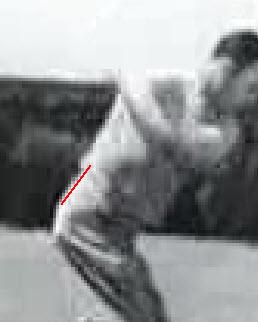
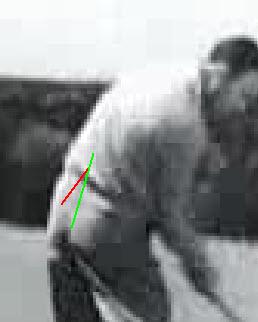
Notice the position of Hogan’s lower spine from just before impact to impact. This is similar to the way Graeme McDowell is moving his spine as I showed in my previous article. Notice the left leg is straightened at an angle like Tiger in the good old days.
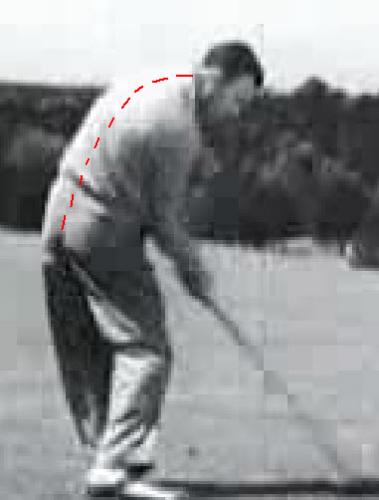
Thus, while his lower spine is extending, his lateral bend creates the curve of his spine at impact as well as the tremendous rotation that moves the club so well through impact.
Planeologists understand the plane very well. They see Hogan’s club moving left on the follow through. Leadbetter would draw a line on the shaft plane and say the club has to move on that plane through impact. Many people have seen these plane boards where they take 4’ x 8’ sheets of plywood and cut out a semi circle so your hands can learn to move the club through on the plane. Or you’ve seen the pvc tubing thingies that make you swing in a circle.
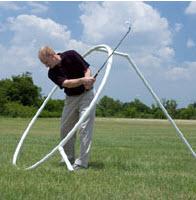
But what if your body does not rotate like Hogan yet tried to achieve this plane or club path? You might look like this.
Arnold Palmer
By the time I started golf way back in 1972, Arnold was in his early 40’s and while still the “King” he certainly was not at the top of his game. All I could remember of his swing was the funky whirly bird finish and the odd looking footwork that appeared to tear up the ground each time he hit. So I never took a close look at his swing until I started to do some research for this article. If you’ve never taken a close look at his swing, perhaps it’s time to do so.
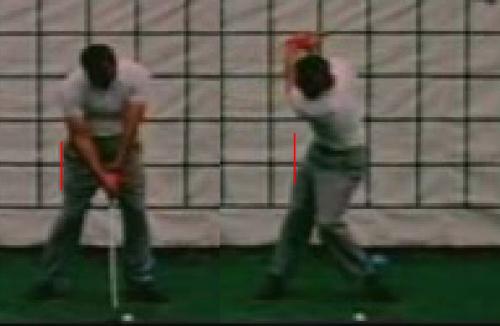
Palmer had a curious backswing where he turned his hips more than Snead or Hogan. Today, this would be a definite no-no because this would create less X-Factor. This in turn caused his lower spine to shift laterally to the left on the backswing. This should make the stack and tilt crowd happy since he’s got a bit of a “centered pivot.”
But watch in transition as he doesn’t slide forward like the stack and tilters tend to do. Instead, he does the squat move.
Then Palmer rotates his body similarly to the way the other legends did.
Notice he does not shift any more to the left on the downswing and he rotated his sacrum away from the target at the start of his downswing.
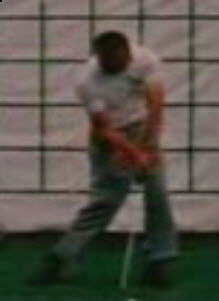
Many people believe that without all this lateral motion you would hit it fat because the bottom of your swing arc would be behind the ball. Not true. If you have this amount of shaft lean at impact (about 8 degrees of shaft lean), the bottom of your swing will be well in front of the ball.
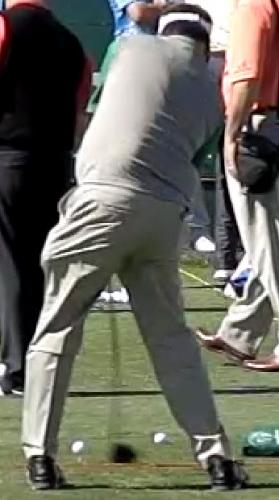

You cannot win seven majors while hitting it fat all the time. Pictured above is another guy with a long lasting swing, Kenny Perry. Whether hitting a driver or an iron, he’s not getting his weight onto his left side that’s currently in vogue. His right foot has not left the ground at impact in both driver and iron swing. Someone please tell him he’s doing this wrong ; )
Bottom line is this; there is a vicious circle of errors that surround this idea of excess lateral motion for most golfers. The general rule of thumb is that the more you slide laterally, the earlier your hips will stall. The more you stall, the more the power needs to be generated by the upper body and arms. When that happens, an early release or casting might occur and then your shaft lean disappears which in turn leads you to slide farther toward the target to avoid hitting it fat and so you must slide even farther to the left.
Excessive lateral slide>>stall>>early release/flip>>fat shots>>more lateral slide>>more stall>>earlier release>>more fat shots.
You can stop the vicious circle by learning to rotate better and get some shaft lean at impact.
Jack Nicklaus
The greatest golfer of all-time is Jack. He’s got the most majors and he certainly began his career with a tremendously powerful and athletic swing. Only after the dance instructors got to him did he develop the head still, reverse pivot backswing (ammo for stack and tilt) and reverse “C” follow through that caused a lot of back problems later in his career. So erase that swing image from your mind and watch this.
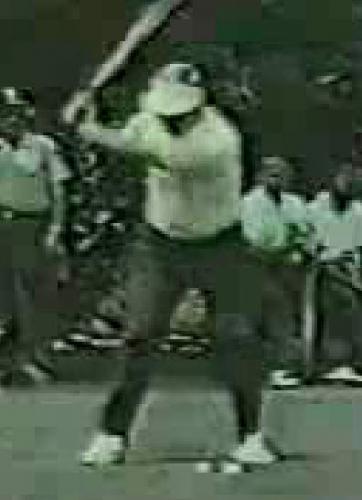
Jack did the squat move.
Then he fired his hips, rotated on the chi line and spun his feet like all the other legends. See a trend?
Legendary Swing Model or Flawed Attempt
These four legendary golfers won a total of 41 major tournament titles! Sam Snead won 7 majors, Ben Hogan won 9 majors, Arnold Palmer won 7 majors, and Jack Nicklaus won 18 majors. They all used these similar moves. Why isn’t this taught? Instead Tiger’s learning how to stack on the left then slide laterally on the downswing. Bennett and Plummer, who got their swing ideas from Mac O’Grady, who got his ideas from the late Homer Kelley. But here’s an interesting twist to the tale.
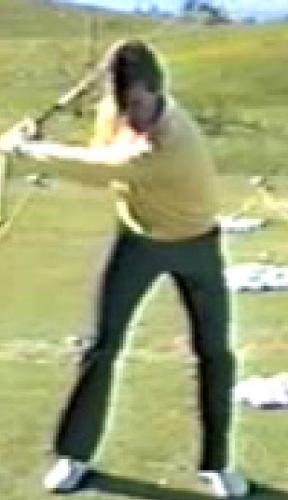
This is Mac from 1990 and he certainly had a great swing. He’s not stacked on the left side like Tiger is now and nowhere near as far left as B & P are teaching. Why is his upper body not leaning left?
From there, Mac did the squat move like the legends.
Nor does Mac slide his hips laterally through impact as the disciples are teaching these days. He’s rotating his hips and swinging on the chi line just as the legends did.
For everyone that is doing a stack and tilt, you’ve got the Palmer backswing, so why are you taught to shift so far to the left at impact? Why not swing like Palmer or Mac? Ah, this new wheel they’ve invented is so much better than the old wheel.
Perhaps everyone is being taught a “fat avoidance” swing because holding lag and hitting with a huge shaft lean is just too difficult for people. In that case, it assumes you aren’t good enough so they’ll make it easier for everyone. Just makes you wonder...
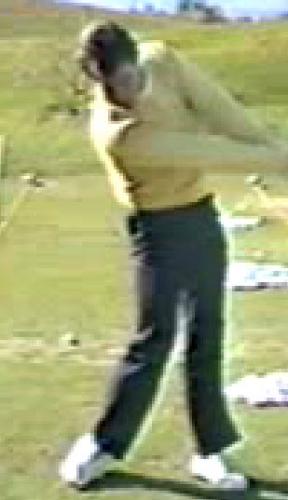
Mac had a great swing. He did not have the excessive slide that’s being taught to everyone. He also had a good amount of shaft lean. Hmmmmm.
But this is too simple right? There are some very complex reasons the legends swung this way. Of course it will be simplified as much as possible so you can understand how to go about making any changes to your swing to better it. But the hip/leg motions, as are all the body motions are always occurring in 3D or in the three planes of motions. Video or still pictures are always 2D and if we forget to calculate motions in the 3D space that they are occurring in, we lose something and it could be very important movements that we are missing. So bear with me on this as we take the journey into the unknown.
("What's A Hip Turn?" wiil be continued in May's edition of AroundHawaii.com.)

